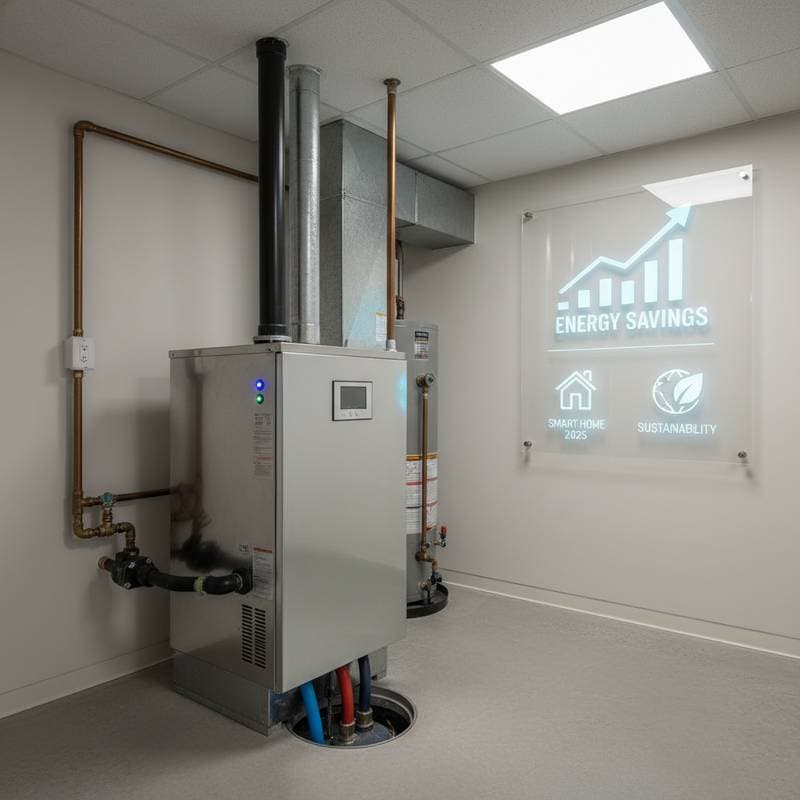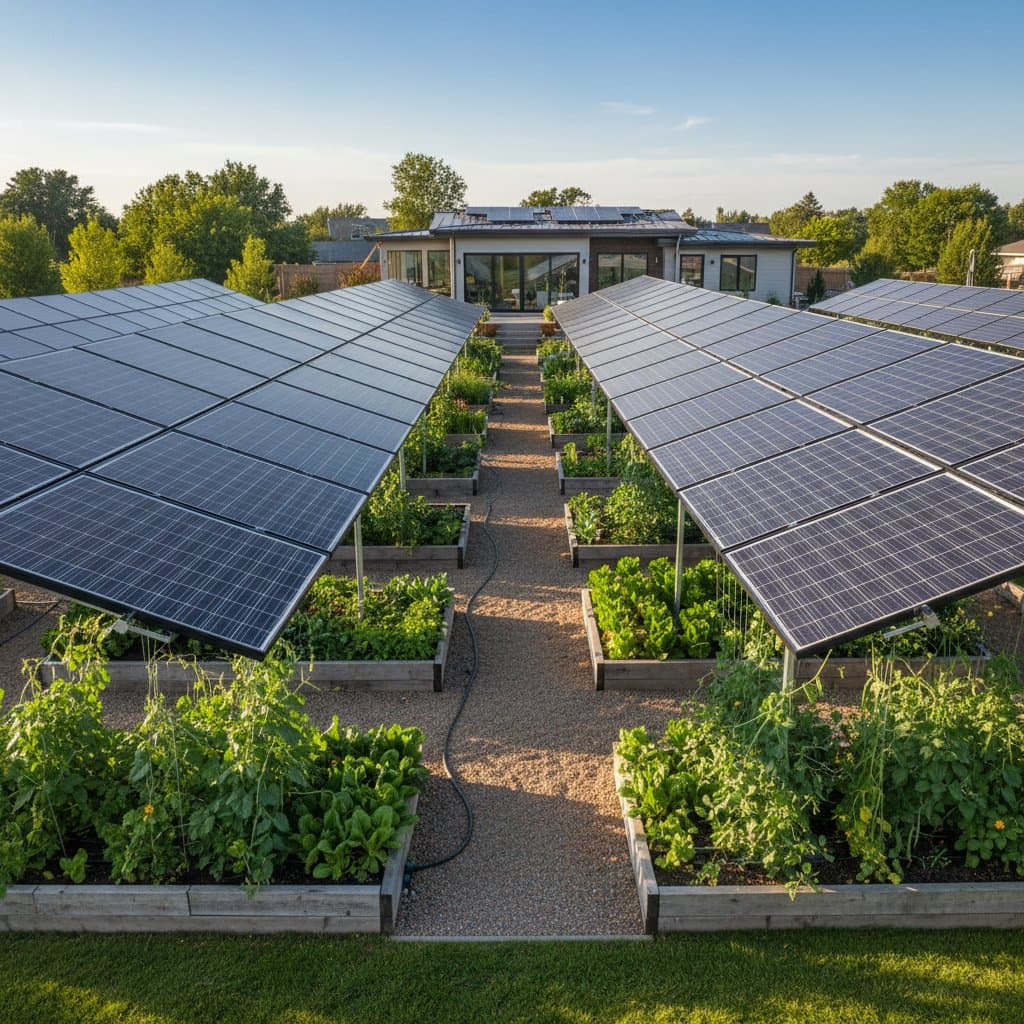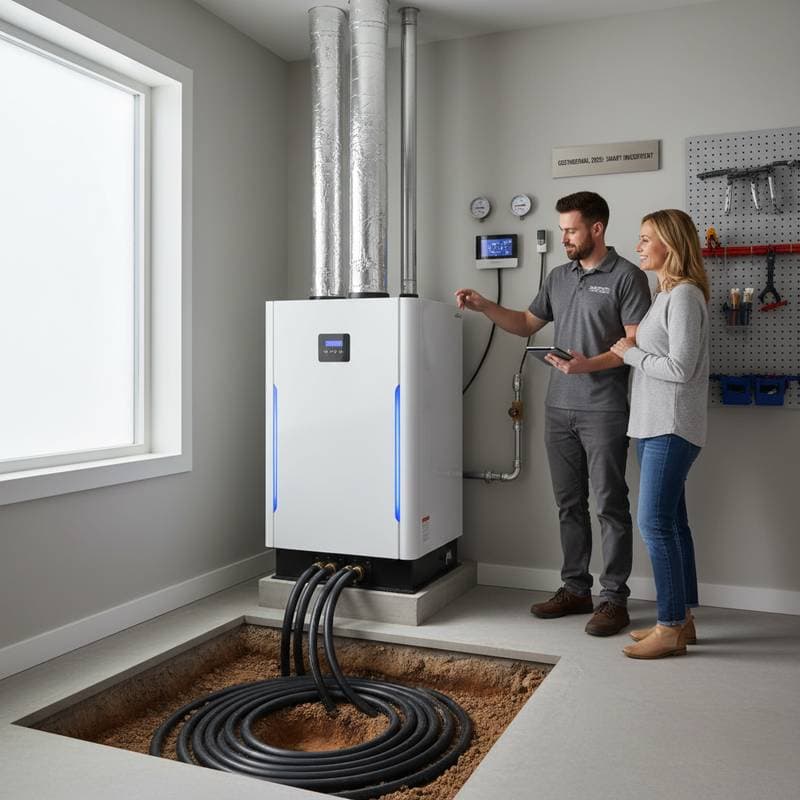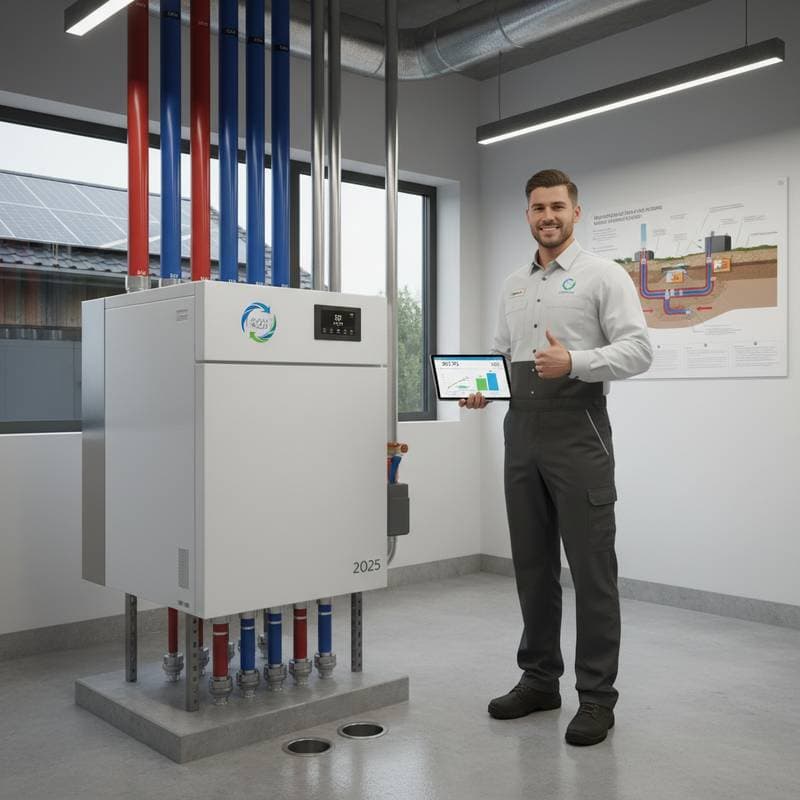Key Points
- Geothermal HVAC systems leverage stable ground temperatures to heat and cool homes with high efficiency.
- Homeowners achieve energy savings ranging from 40 to 70 percent, based on system design and local conditions.
- Initial costs surpass those of traditional systems, yet long-term benefits include lower utility bills and reduced maintenance.
- Optimal performance depends on proper sizing, soil conditions, and expert installation.
- These systems offer quiet operation, reliability, and environmental benefits, establishing them as a wise choice for sustained comfort and sustainability.
The Hidden Power Beneath Your Feet
Imagine standing in your backyard, surveying the garden, oblivious to the reliable renewable energy source buried mere feet underground. This steady warmth in the soil powers geothermal HVAC systems, providing one of the most efficient methods to maintain indoor comfort for decades.
The technology dates back decades, yet recent shifts in homeowner priorities have elevated its appeal. Escalating energy prices and heightened environmental awareness prompt more individuals to adopt geothermal heating and cooling as a durable solution.
Why Geothermal HVAC Matters
Heating and cooling consume the majority of energy in typical homes. Conventional HVAC units, such as air-source heat pumps or combustion-based systems, contend with fluctuating outdoor temperatures. Geothermal systems, by contrast, draw on the earth's consistent temperature, which remains stable year-round, to transfer heat into or out of the home.
This approach requires substantially less electricity, ensures uniform comfort, and lowers greenhouse gas emissions. For those seeking significant energy reductions and reliable indoor conditions, geothermal represents a dependable investment.
Key Considerations for Planning
Prospective geothermal projects demand careful evaluation of multiple elements.
-
Site Conditions
Soil composition, groundwater presence, and land availability shape the system design. Moist or loamy soils facilitate superior heat transfer compared to dry or rocky terrains, potentially affecting installation depth and expenses. -
System Type
Configurations include horizontal loops, vertical loops, and pond or lake loops. Horizontal loops, installed in trenches, suit expansive properties. Vertical loops, drilled to greater depths, accommodate compact lots. Pond loops excel in areas with accessible water features. -
Home Size and Insulation
Efficient insulation amplifies geothermal performance. Homes with outdated or inadequate insulation may require enhancements to windows or walls to realize maximum benefits. -
Professional Design and Installation
Specialized knowledge proves essential for geothermal setups. Certified professionals employ modeling software to calculate heat loads, determine loop dimensions, and predict outcomes. Professional involvement remains indispensable to avoid suboptimal results.
Cost Breakdown and ROI Analysis
Upfront expenses for geothermal systems exceed those of standard HVAC installations. Residential projects span from moderate budgets for modest homes to elevated costs for larger or intricate sites, encompassing ground loop excavation, heat pump equipment, and internal ductwork.
Operational expenses drop considerably in comparison. Numerous homeowners experience utility reductions of 40 to 70 percent relative to traditional systems. Accounting for decreased maintenance and extended durability, the return on investment typically materializes within 7 to 12 years.
Consider this straightforward illustration:
- Traditional HVAC: Annual heating and cooling energy costs total $3,000.
- Geothermal HVAC: The same level of comfort costs $1,200 annually.
Such disparities accumulate rapidly, particularly amid rising energy tariffs.
Design and Layout Ideas
Although the core system resides underground, interior configurations influence overall effectiveness. The geothermal heat pump integrates with conventional ductwork, radiant floor heating, or hydronic panels. Radiant setups complement geothermal particularly well, as they operate at lower water temperatures, enhancing efficiency.
Certain homeowners pair geothermal with solar panels to achieve greater sustainability. The solar installation supplies the electricity for the heat pump, yielding a home with near-zero net energy consumption.
For limited spaces, vertical loops integrate seamlessly. Envision underground borings akin to elevator shafts, preserving surface area without extensive trenching.
Factors Influencing the Project
Various elements impact system performance and financial returns.
- Local Energy Rates: Elevated utility prices accelerate savings realization.
- Climate: Geothermal functions effectively across diverse climates, though pronounced seasonal variations yield the most substantial advantages.
- Maintenance: Upkeep remains straightforward, limited to filter replacements and periodic loop assessments.
- Incentives and Financing: Regional programs often provide rebates or loans for renewable installations, offsetting initial outlays.
Strategic timing enhances viability. Integrating geothermal during a scheduled HVAC replacement proves economical, as existing infrastructure like ducts may already factor into plans.
Sustainable Features and Efficiency Gains
Geothermal HVAC qualifies as one of the most eco-conscious home technologies. Key attributes include:
- Energy Efficiency: Each unit of electricity input yields three to four units of heating or cooling output.
- Reduced Carbon Emissions: Dependence on renewable earth energy diminishes reliance on fossil fuels.
- Longevity: Ground loops endure up to 50 years, while indoor components last over 20 years with routine care.
- Quiet Operation: Absence of external compressors or fans ensures indoor tranquility.
These qualities combine to deliver superior performance, comfort, and environmental stewardship, surpassing alternative HVAC solutions in enduring value.
Frequently Asked Questions
Is a geothermal system suitable for any home?
Geothermal technology adapts to nearly every residence, though soil properties and property dimensions dictate the appropriate loop configuration.
Can I retrofit geothermal into an existing house?
Retrofitting proves feasible, often coinciding with HVAC overhauls or renovations. Primary limitations involve space for excavation or trenching.
How reliable is it?
Reliability ranks exceptionally high. Predominantly subterranean with fewer mechanical elements, the system experiences infrequent breakdowns.
What about maintenance costs?
Costs stay low. Regular filter changes suffice, with loop systems demanding little intervention post-installation.
Will it increase my home’s value?
Energy-efficient enhancements typically elevate market appeal. Prospective buyers value reduced utilities and consistent comfort.
Steps to Transition to Geothermal HVAC
Assess your current energy usage and consult certified experts to evaluate site suitability. Secure financing through available incentives to manage upfront costs. Proceed with professional installation to ensure optimal design and performance. Enjoy decades of savings, comfort, and sustainability as your home aligns with 2025's green standards.








